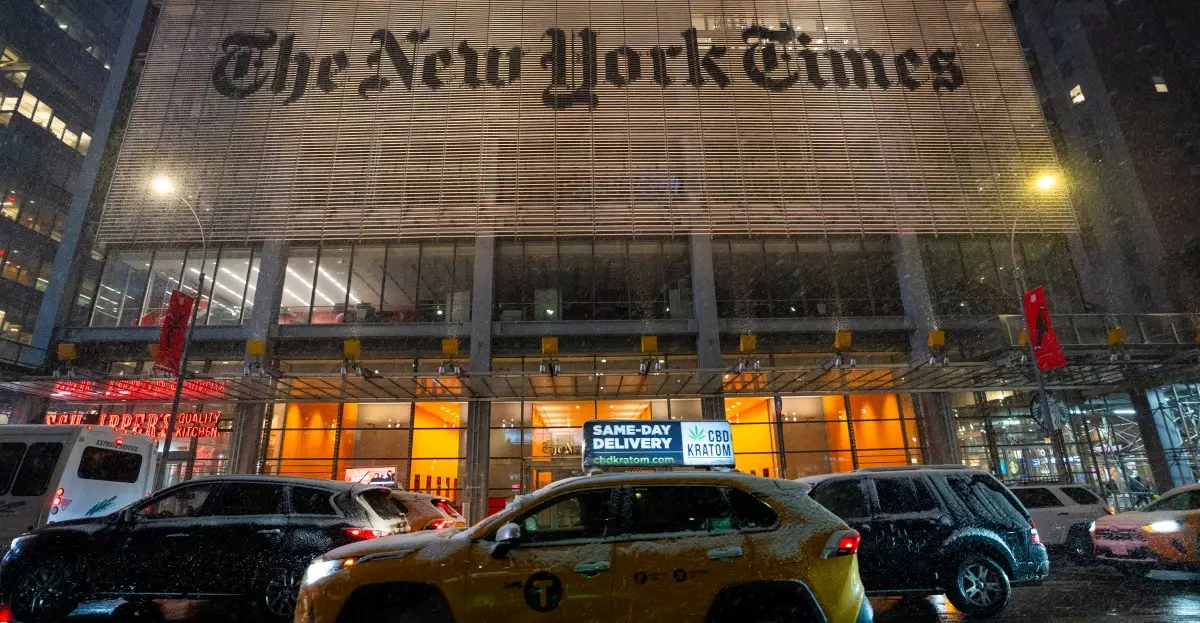In an age where technology evolves at breakneck speed, mainstream media outlets are increasingly turning to artificial intelligence (AI) to redefine their reporting and editorial processes. The New York Times stands as a prime example of this trend, as recent reports reveal its initiative to train staff on various AI tools aimed at enhancing editorial efficiency. This shift represents not only a response to the demands of modern journalism but also a strategic move in the face of competitive pressures from the digital landscape. By integrating AI, The Times acknowledges the potential for innovative efficiencies while also grappling with key ethical considerations.
The internal communications disseminated within The New York Times indicate a thorough approach to the deployment of AI technology in the newsroom. Product and editorial teams are slated to undergo comprehensive training on AI applications designed to facilitate their work processes. Tools such as Echo, a platform for summarizing articles and briefings, have already been introduced. This formalized training further underlines the organization’s commitment to enhancing productivity through technology while maintaining the integrity of journalistic standards.
In a competitive information landscape where speed and accuracy are paramount, AI can play a crucial role. By assisting staff in crafting headlines, generating SEO-friendly content, and suggesting questions for interviews, AI aims to provide support without overshadowing the essential human element of journalism. However, the challenge lies in finding the right balance between technological assistance and the preservation of nuanced storytelling.
While The Times has embraced AI, it has implemented strict guidelines governing its use within the newsroom. Staff are cautioned against allowing AI systems to draft articles or modify them significantly without intervention from human editors. This is a crucial distinction; the essence of journalism—critical thinking and ethical storytelling—remains anchored in human experience. The organization has underscored its commitment to ensuring that every report continues to be “reported, written, and edited” by skilled journalists.
Crucially, The Times has laid down specific restrictions regarding the sourcing of content and the ethical use of AI-generated resources. Prohibiting the circumvention of paywalls or the unauthorized input of copyrighted material into AI systems reflects an acute awareness of intellectual property considerations, which are particularly pressing amid ongoing legal disputes with major tech firms like OpenAI and Microsoft. The delicate interplay between technology and ethical journalism cannot be overstated, necessitating vigilant adherence to guideline protocols.
While The New York Times takes bold steps towards AI integration, it is not alone in this journey. Numerous media outlets worldwide are experimenting with AI to varying extents, as they seek to keep pace with a rapidly changing journalistic environment. From utilizing language models for grammar checks to developing entire articles, the adoption of AI tools marks a noteworthy trend that raises fundamental questions about the nature of reporting.
With sociocultural shifts driving transformations in media consumption, the willingness of news organizations to embrace technological advancements can impact their relevance significantly. However, the core challenge remains: as they incorporate AI into their frameworks, how do they ensure the preservation of journalistic independence and integrity?
As The New York Times charts its course into the AI-enhanced future of journalism, the balance between embracing innovation and preserving traditional values appears critical. The initiative reflects a growing recognition that AI can augment journalistic processes when implemented thoughtfully. Nevertheless, by adhering to established ethical standards and maintaining direct human oversight, the organization can navigate this new terrain while safeguarding the core principles of journalism.
In the final analysis, as newsrooms around the globe adapt to a landscape increasingly influenced by technology, the commitment to factual accuracy, ethical reporting, and creative storytelling must remain steadfast. The evolution of journalism in the AI era will depend on the choices made by those in the newsroom, ensuring that while tools evolve, the heart of journalism remains truly human.

